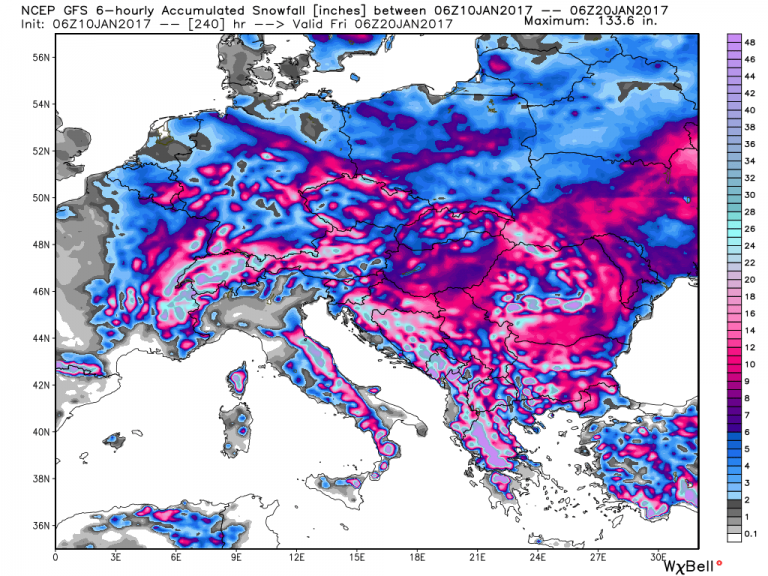Some impressive winter events have been taking place all across the northern hemisphere lately. Especially eastern and southeastern Europe have been pounded by massive snowfalls and tremendously cold temperatures. Turkey has been buried by heavy snows and extreme temperatures have gripped the entire USA and vast areas of Russia.
The global warming climate appears to have been hacked by natural factors.
Extreme cold and snow pound the northern hemisphere as some scientists warn of the potential for ice age conditions. Photo of Greenland by NASA (public domain)
Arctic conditions spread deep into the Mediterranean
These are all odd events when considering the “consensus” forecasts made 15 years ago, which warned that snow and ice would become rare.
In fact many scientists warned that Mediterranean conditions would spread into northern Europe. Lately, however, just the opposite has happened: Arctic conditions have plunged down into the Mediterranean!
Even worse, there is no end in site for the harsh European winter conditions, German mass circulation daily Bild writes here.
Warning of an impending ice age
So in the face of all the earlier global warming predictions, it is now only ironic that yesterday the German-language Pravda TV site here published an article warning of an impending ice age. The article cites Yale scientist Wei Liu and a recent paper he published on the “overlooked possibility of a collapsed Atlantic Meridional Overturning Circulation“. Should the ocean heat conveyor collapse, then there would be “a prominent cooling over the northern North Atlantic and neighboring areas, sea ice increases over the Greenland-Iceland-Norwegian seas and to the south of Greenland.”
Note: Pravda is a rebel-type German site, and so could be viewed to be in similar ranks as climate alarmist sites, but with an opposite view. A collapsed AMOC is still speculative.
Useless models
The Pravda report summarizes Liu’s paper as follows:
Pravda also describes how some experts say today’s climate models fail to take the known ocean and solar factors in account.
UPDATE:
Snow forecast for Europe for the next 10 days!:
Snow forecast for Europe for the next 10 days!:

The 7.3-magnitude quake was measured at a depth of 380 miles (617 km).
According to the USGS the quake struck in the centre of the Celebes Sea, between the Philippines and Indonesia.
The Pacific Tsunami Warning Centre (PTWC) stated: "There is no tsunami threat because the earthquake is located too deep inside the earth."
The Philippines are located in the so-called Pacific Ring of Fire where a large number of earthquakes and volcanic eruptions occur.
A major undersea earthquake with a magnitude of 7.3 struck southeast of the Philippines on Tuesday, the US Geological Survey (USGS) said.
The quake was measured at a depth of 617 km (380 miles), the USGS said.
It struck in the Celebes Sea and comes five days after a smaller, 4.7-magnitude tremor in the same area, according to the USGS.
Journalist Barnaby Lo said he felt "no significant tremor" on the island of Jolo, which lies north-east of the epicentre.
The US Tsunami Warning Centre has issued no warning, advisory, watch or threat after the quake.
Philippine seismologists said the earthquake was far too deep to cause any damage and casualties or generate a tsunami.
Renato Solidum of the Philippine Institute of Volcanology and Seismology told AP that the quake, which was set off by movement of oceanic plates 625 kilometers (387 miles) under the seabed, was slightly felt in southern General Santos city.
Solidum said the undersea quake was centered 223 kilometers (138 miles) southeast of Sulu province and aftershocks were possible.
The Philippine archipelago lies in the Pacific “Ring of Fire,” where earthquakes and volcanic activities are common. A magnitude 7.7 quake killed nearly 2,000 people on the northern island of Luzon in 1990.
No comments:
Post a Comment